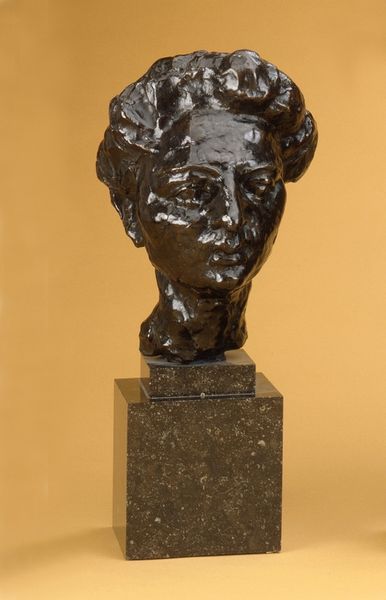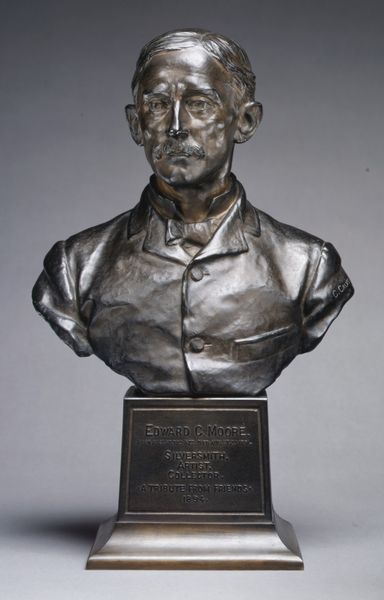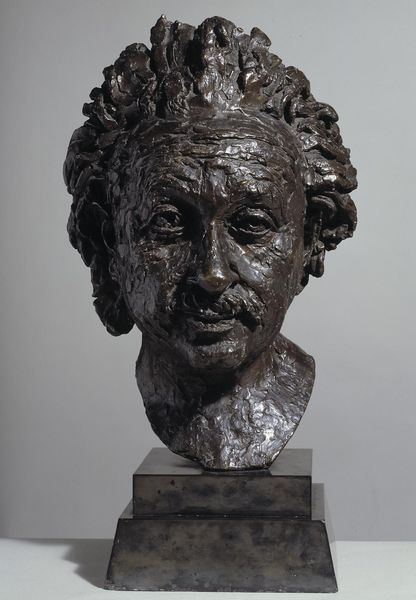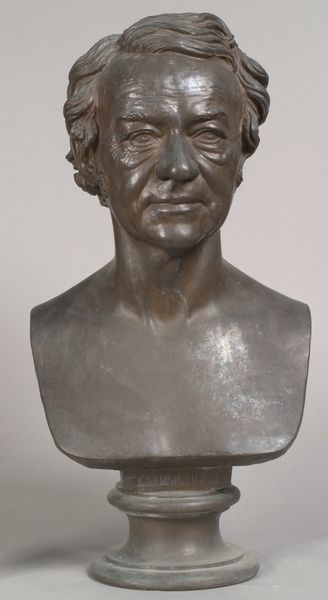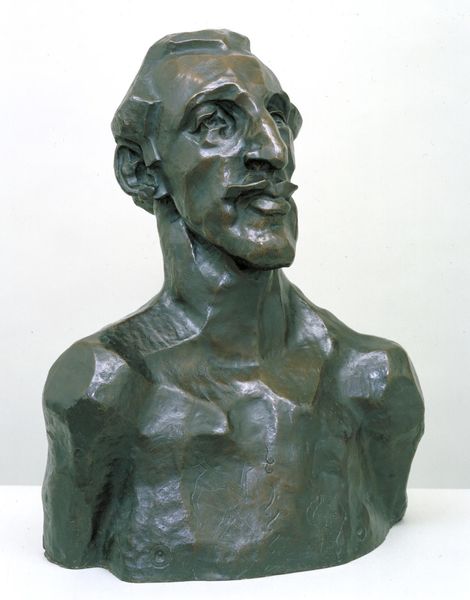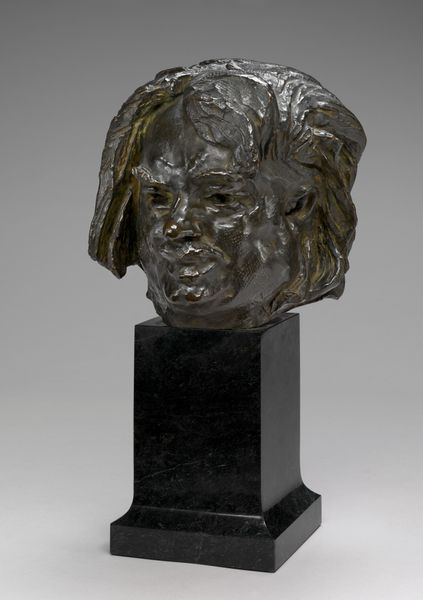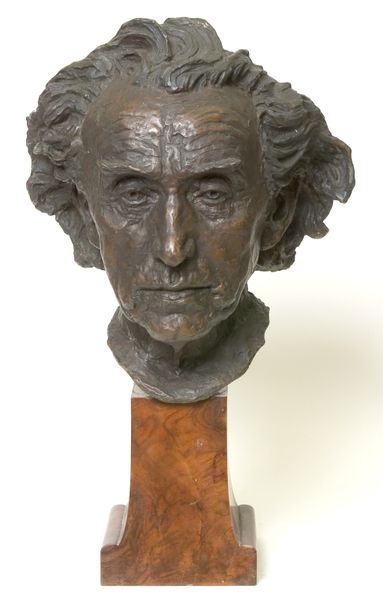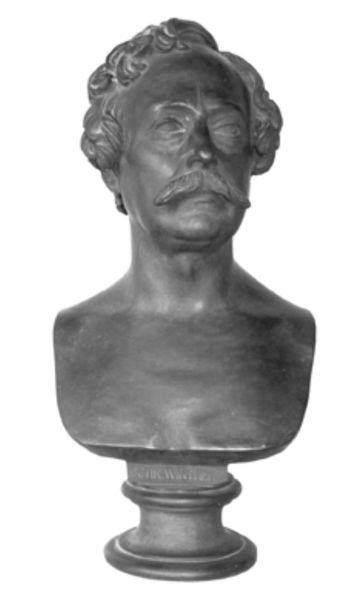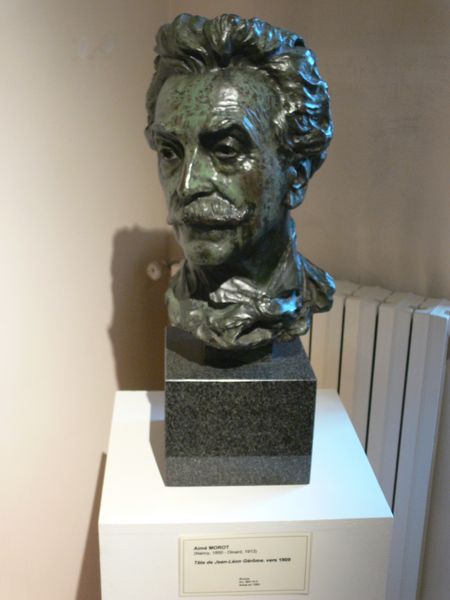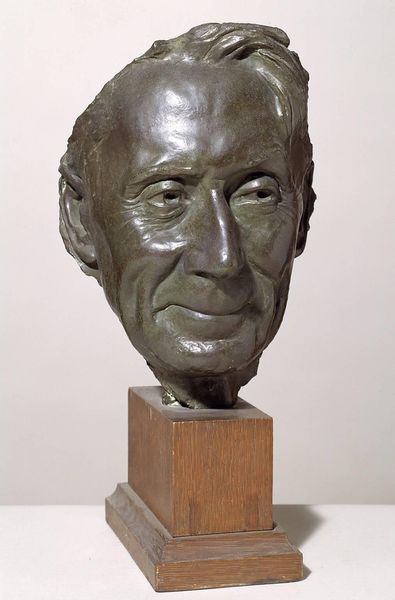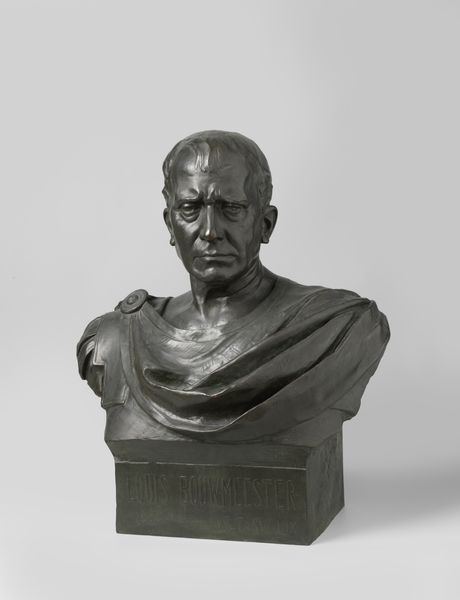
Dimensions: 14 × 9 × 10 in. (35.6 × 22.9 × 25.4 cm)
Copyright: Public Domain
Editor: This is Auguste Rodin's sculpture of Gustav Mahler from 1909. It's incredibly intense! What do you see in this piece, beyond just a portrait? Curator: Beyond likeness, I see Rodin grappling with Mahler's legacy and position within a rapidly changing society. The sculpture captures the weight of Mahler's ambition, his struggles against anti-Semitism, and his revolutionary approach to music, all etched onto his face. Do you notice how the rough texture of the bronze contrasts with the smooth planes of his face? Editor: I do. It's like a battle between polished and raw, controlled and chaotic. Curator: Exactly! Consider the context. Mahler, as a Jewish composer in Vienna, faced considerable prejudice, forcing him to convert to Catholicism for professional advancement. The work also reflects Rodin's own struggles for artistic acceptance. Can we see a parallel here? Editor: Maybe a shared sense of being an outsider? I never really considered the societal pressures on artists like Mahler and Rodin. Curator: Absolutely. Both men navigated complex social landscapes. Rodin, challenging academic norms with his expressive style; Mahler, pushing the boundaries of symphonic form. Their works can be viewed as acts of resistance, asserting individual vision against oppressive structures. The intensity you noted – that's the fire of someone pushing back. Editor: It's incredible to think about how personal and political histories are intertwined within this object. Curator: Indeed. Looking at it that way shifts our understanding. It’s not just a portrait; it's a historical document, reflecting identity, power, and artistic defiance. Editor: Thanks, that gave me a totally new perspective on how to view Rodin's Mahler.
Comments
No comments
Be the first to comment and join the conversation on the ultimate creative platform.


